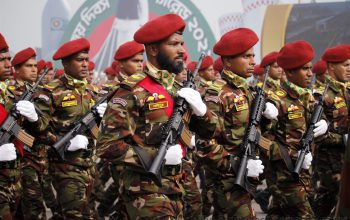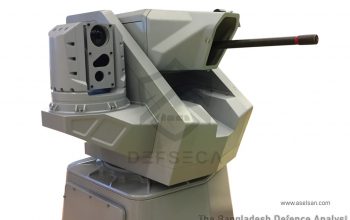Jungle warfare is a term used to cover the special techniques needed for military units to survive and fight in jungle terrain.
It has been the topic of extensive study by military strategists, and was an important part of the planning for both sides in many conflicts, including World War II and the Vietnam War.
The jungle has a variety of effects on military operations. Dense vegetation can limit lines of sight and arcs of fire, but can also provide ample opportunity for camouflage and plenty of material with which to build fortifications.
Jungle terrain, often without good roads, can be inaccessible to vehicles and so makes logistical supply and transport difficult, which in turn places a premium on air mobility. The problems of transport make engineering resources important as they are needed to improve roads, build bridges and airfields, and improve water supplies.
Jungle environments can also be inherently unhealthy, with various tropical diseases that have to be prevented or treated by medical services. Likewise the terrain can make it difficult to deploy armoured forces, or any other kind of forces on any large scale. Successful jungle fighting emphasises effective small unit tactics and leadership.
The Bangladesh Army has become highly experienced in jungle warfare with many of its formations sent to the Chittagong Hill Tracts in rotation to fight the bush war since the 1970s against the Shanti Bahini.
Officers and soldiers are trained in jungle warfare at the School of Infantry & Tactics at Jalalababad Cantonment in Sylhet.
The cantonment also houses a sniper training school among other training facilities.
Members of the Bangladesh Army have also been sent to countries such as Belize, Malaysia and India for jungle warfare courses.
The Bangladesh Army conducted jungle warfare exercises with the Indian Army at its Counter Insurgency and Jungle Warfare School (CIJWS) located at Vairengte, Mizoram.
The photos share with you today reflect an operation by members of the Bangladesh Army in the Chittagong Hill Tracts. The region is so remote there are no roads or cell phone connectivity. Army troops have to be dropped in to the hot zone using helicopters and exfiltrated the same way.
Armed insurgents are the least of their worries as environmental dangers can become bigger worries.
Different groups from India and Myanmar as well as Shanti Bahini (and their modern descendants) have used the remote location to their advantage however with modernisation of the Bangladesh Army and a technological advantage it is now far easier to operate in these hunting groups for Bangladesh’s braves.




